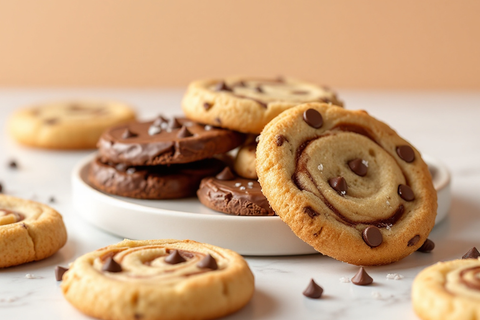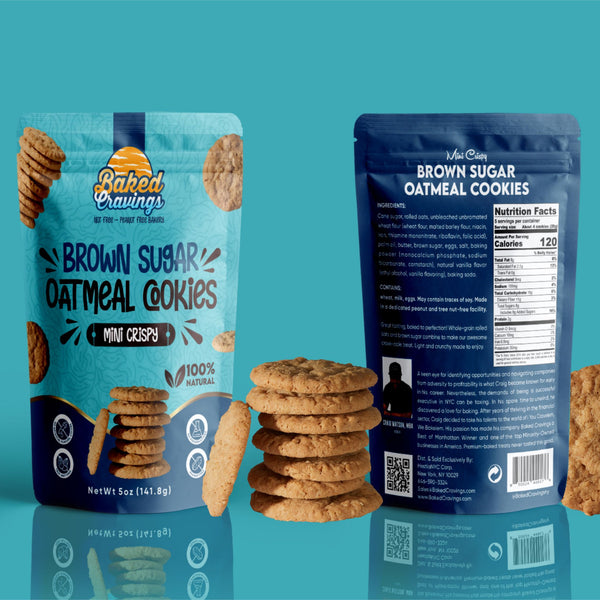Introduction to Allergy-Friendly Baking
Allergy-friendly baking means making treats safe for everyone, especially those with food allergies. Think of it as cooking with a safety net. Instead of nuts, gluten, dairy, or eggs, we use other cool ingredients to make sure no one’s left out of the dessert party. It’s not as hard as it sounds. Really, it’s about swapping stuff out. Use almond milk instead of cow’s milk, or try chickpea flour instead of regular flour. Simple, right? This kind of baking takes a bit more thinking, but the smiles you get? Totally worth it. So, whether you’re allergic or you’re baking for someone who is, this guide’s going to help you make some tasty treats without the worry. Let’s dive in and make baking fun and safe for everyone.
The Rise of No Nuts Bakeries: Why They Matter
No nuts bakeries are becoming more popular and for good reasons. Many people are allergic to nuts. When we say “many,” we mean a big chunk of the population. In fact, nut allergies are among the most common food allergies out there. They can range from mild reactions to life-threatening situations. This is where no nuts bakeries come into the picture. They offer a safe haven for those who must avoid nuts due to allergies. But it’s not just about avoiding nuts. These places also shine a light on the importance of food safety and inclusivity. No nuts bakeries make it easier for people with allergies to enjoy treats without fear. This means more kids can enjoy birthday cakes and more families can share desserts without stress. Plus, these bakeries push the envelope in creativity, whipping up treats that are both safe and delicious, showing that you don’t need nuts to make something taste good. In essence, no nuts bakeries matter because they stand for safety, inclusivity, and innovation in the baking world.
Key Ingredients in No Nuts Bakery Recipes
When you step into the world of no nuts baking, you’re not just cutting out nuts. You’re making room for a whole host of other ingredients that bring flavor, texture, and nutrition without the allergy risk. Here are the essentials you’ll find in a no nuts bakery recipe collection:
1. Flour Alternatives: Instead of traditional wheat flour, which can be risky for those with allergies, no nuts baking often uses oat, coconut, or rice flour. These alternatives not only dodge the nut issue but also offer unique tastes and textures.
2. Seeds: Seeds like chia, flax, sunflower, and pumpkin are game changers. They’re packed with nutrients and can be used whole, ground into meal, or turned into butters. They give that nutty flavor without the allergy concerns.
3. Nut-Free Butters: Sunflower seed butter and soynut butter are popular choices. They mimic the creamy texture and rich taste of nut butters, making them ideal for spreading on toast or adding to recipes for that creamy, rich texture.
4. Fruits and Veggies: Applesauce, mashed bananas, and pureed pumpkin step in as moisture-adders and flavor boosters. Not only do they keep your baked goods moist, but they also add natural sweetness and depth of flavor.
5. Dairy and Dairy Alternatives: Milk is often a key component, but for those avoiding nuts and dairy, almond milk is off the list. Enter oat milk, coconut milk, and rice milk. They keep things creamy and delicious without any nut risk.
6. Sweeteners: Honey, maple syrup, and agave nectar are staples for adding natural sweetness without relying on processed sugars. They bring their own unique flavors and can enhance the overall taste of your baked goods.
Each ingredient has its place, working together to create safe, delicious baked treats that everyone can enjoy. It’s not just about avoiding nuts; it’s about discovering a whole
Substitutes for Common Allergens in Baking
When baking for allergies, the game’s name is substitution. You don’t have to miss out on delicious cakes or cookies just because of a nut, dairy, or gluten intolerance. Here’s a quick rundown on swapping out the common culprits. For nuts, try roasted chickpeas or seeds like sunflower or pumpkin for that crunch. For dairy, coconut oil, applesauce, or plant-based milks like almond or oat milk can easily step in for butter and cow’s milk. But, remember, if you’re steering clear of nuts, opt for oat or soy milk. For eggs, things like flaxseed or chia seeds mixed with water, mashed bananas, or commercial egg replacers do the trick, helping your recipes stick together. For wheat and gluten, go for gluten-free flour blends or almond, coconut, or oat flour. Just a head’s up, each of these flours behaves a bit differently, so you might need to play around to get your recipe just right. By swapping these out, you keep the cooking fun and safe for everyone, without compromising on taste. Happy allergy-friendly baking!
How to Read Labels for Hidden Allergens
When baking for those with allergies, mastering the art of label reading is crucial. Hidden allergens lurk in many products, posing a risk to those with sensitivities. First off, skim the ingredients list. Allergens like nuts, dairy, and eggs, often hidden under less familiar names, should be a red flag. For instance, “casein” and “whey” point to dairy. Secondly, watch out for phrases like “may contain” or “produced in a facility that also processes.” These warnings indicate a risk of cross-contamination, crucial for those with severe allergies. To be on the safe side, familiarize yourself with the various names each allergen can go by and opt for products certified as allergen-free when possible. Remember, vigilance is key in keeping baked goods safe for everyone to enjoy.
Tips for Safe Baking in a No Nuts Kitchen
When you’re baking in a no nuts kitchen, playing it safe is the name of the game. First up, always double-check your ingredients. Labels are your best friends here. Look for words like “processed in a facility that also handles nuts.” That’s a no-go. Next, think about your tools. Cross-contamination is sneaky. Use separate utensils, bowls, and even appliances if possible, and make sure they’re all cleaned thoroughly before you start. Now, let’s talk about alternatives. There are tons of nut-free options out there. Sunflower seeds or pumpkin seeds can add that crunch. For nut butters, go for sunflower seed butter or soy nut butter. They’re tasty and safe. Flour’s another tricky one. Almond flour’s out, but oat, wheat, or coconut flour are in. Just make sure they’re processed in a nut-free facility. Finally, don’t forget to communicate. If you’re baking for others, let them know about your nut-free approach. It’s all about keeping everyone safe, happy, and well-fed. Keep these tips in mind, and you’ll master safe, no nuts baking in no time.
Our Top 5 No Nuts Bakery Recipes to Try at Home
Diving into a no nuts baking adventure doesn’t have to mean giving up on flavor or texture. Our bakery has mastered the art of allergy-friendly treats, and we’re here to share our top 5 recipes that guarantee satisfaction without a nut in sight. First up, our Chocolate Chunk Cookies – rich, chewy, and utterly decadent, these are a hit with everyone, nut allergies or not. Then, there’s the Classic Vanilla Cake. Light, fluffy, and versatile, it’s perfect for birthdays and celebrations, proving that simple ingredients can create something extraordinary. Our Lemon Berry Muffins bring a zesty punch and are bursting with fresh berries, ideal for a quick breakfast or a sweet snack. For those who love a bit of texture, our Oatmeal Raisin Cookies are made with gluten-free oats, making them safe and delicious. Last but certainly not least, our Pumpkin Spice Bread offers a slice of comfort with every bite, packed with flavor and suitable for all seasons. These recipes are crafted to be enjoyed by everyone, ensuring that nut allergies don’t hold you back from delicious baked goods.
Managing Cross-Contamination: Practices from a No Nuts Bakery
When running a no nuts bakery, keeping nuts away from your products is top priority. You’ve got customers who count on you to be safe. So, how do we keep things clean and nut-free? Easy, we stick to a few key practices. First, we check every ingredient that comes into our kitchen. Even a trace of nuts can cause problems, so we make sure everything is certified nut-free. No guessing here. Then, we’re all about cleaning. Before we start baking, every surface gets a good scrub. We’re talking mixers, spoons, countertops, even the air vents. It’s all about keeping those nut particles out. We also keep our nut-free ingredients far away from anything else. Think of it as an invisible barrier – nothing crosses that line. Last, but not least, we train our team regularly. Everyone from the bakers to the cleaners knows how important it is to keep things nut-free. They’re the eyes and ears on the ground, making sure no nut-related mishaps happen. Follow these steps, and you’re on your way to running a successful no nuts bakery. Your customers will thank you for it.
Success Stories: The Impact of No Nuts Bakeries on Allergic Communities
No nuts bakeries have changed the game for folks with allergies, and not just a little bit. Imagine this: walking into a bakery without worrying if your food will send you to the hospital. That’s life now for many thanks to these places. People with severe nut allergies, who once had to skip past the dessert section, now dive in. Stories flood in from grateful parents seeing their kids enjoy birthday cakes and cookies for the first time without fear.
One bakery, let’s call it SafeBites, revolutionized its community. A mom, with tears in her eyes, shared how her son could finally have a birthday party where he could eat his cake along with his friends. Another person mentioned how they traveled across the city just to experience the joy of eating a nut-free pastry.
The real kicker? No nuts bakeries aren’t just impacting those with allergies. They are teaching entire communities about food safety and inclusion. Schools and workplaces are becoming more aware of the importance of catering to those with dietary restrictions. Events are more inclusive, everyone gets to indulge, no one is left out.
In short, no nuts bakeries aren’t just businesses. They’re community heroes, making sure everyone gets to enjoy the sweet things in life, worry-free.
Conclusion: The Future of Allergy-Friendly Baking
As we’ve kneaded through the dough of information, we see allergy-friendly baking not just as a trend, but as the future path of inclusive cooking. With more people every day discovering allergies to nuts, gluten, and dairy, the demand for safe, delicious alternatives is skyrocketing. Bakeries and home kitchens alike are now embracing the challenge, turning it into an opportunity to innovate with new ingredients and methods. Looking ahead, expect to see an explosion of creativity in the kitchen. From ancient grains making a comeback to the rise of plant-based alternatives, the options for allergy-friendly baking are only set to widen. This movement is not just about avoiding certain ingredients; it’s about welcoming everyone to the table with open arms and a full plate. So, gear up your ovens, because the future of baking is bright, inclusive, and undeniably delicious.



















